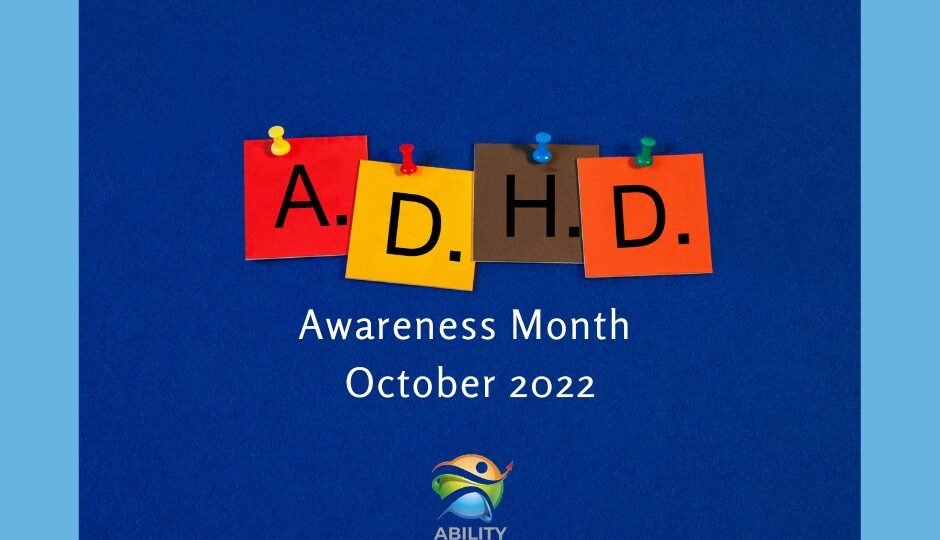Unlocking Potential: Understanding ADHD Disorder for Effective Management
June 6, 2024 | by Freya Parker

Millions of individuals worldwide suffer from Attention Deficit Hyperactivity Disorder (ADHD Disorder), a complicated neurological disorder. It is essential for persons who have been diagnosed with ADHD Disorder as well as their family to comprehend the science underlying the disorder. This article explores the main features of ADHD disorder, including its biological foundation and available treatments.
What is the disorder known as ADHD?
The neurodevelopmental disorder known as ADHD Disorder is typified by recurrent patterns of hyperactivity, impulsivity, and inattention that obstruct normal functioning and development. Although it can last into maturity, it is typically diagnosed in childhood. Three main forms of ADHD Disorder exist:
Presentation Was Mostly Inattentive
- Presentation that is Mostly Hyperactive and Obsessive
- Together Showcase
- The Molecular Underpinnings of ADHD
- Heredity and Genetics
Genetics is one of the most important variables in the development of ADHD Disorder. Research indicates that there may be a genetic component to ADHD since the disorder tends to run in families. According to twin research, there is a 70–80% probability that if one twin has ADHD, the other twin will likewise have the disorder. ADHD Disorder has been related to many genes that are involved in the regulation of dopamine, a neurotransmitter that is linked to attention and reward systems.
The Architecture and Function of the Brain
Studies using neuroimaging have shed important light on the brain variations seen in people with ADHD Disorder. Important conclusions consist of:
Diminished Brain Volume: Individuals diagnosed with ADHD frequently exhibit reduced brain volumes in regions such as the prefrontal cortex, which is implicated in executive tasks like attention, impulse control, and decision-making.
Children diagnosed with attention deficit hyperactivity disorder (ADHD) frequently show signs of delayed cerebral cortex maturation, especially in areas related to attention and motor planning.
Dopamine Dysregulation: It is frequently seen that there are abnormalities in the dopamine pathways, especially in the prefrontal cortex and basal ganglia. Dopamine plays a key role in mood, attention, and behavior regulation.
Environmental Elements
ADHD Disorder develops as a result of both environmental and genetic variables, however genetics plays a crucial impact. Premature delivery, low birth weight, lead exposure, and alcohol and tobacco use during pregnancy are a few examples. Furthermore, traumatic events and stress in early life might worsen the symptoms of ADHD.
Signs and Prognosis
Principal Symptoms
The two primary domains of symptoms for ADHD disorder are as follows:
Inattention: Having trouble maintaining focus, making careless mistakes frequently, being disorganized, and forgetting things.
Hyperactivity-Impulsivity: restlessness, talking too much, cutting other people off, inability to wait one’s time, and thoughtless behavior.
Diagnostic Criteria Determining the diagnosis of ADHD disorder entails a thorough assessment by a medical expert, which usually consists of:
Behavioral assessments: Parents, instructors, and even the individuals themselves fill out standardized behavior rating scales.
Clinical Interviews: In-depth discussions encompassing the patient’s medical, developmental, and family background.
Observation: Close observation in various contexts to determine how symptoms affect day-to-day functioning.
Methods of Therapy
Medication is frequently the mainstay of treating ADHD Disorder. The two main categories of drugs are those that stimulate the body and those that don’t:
Stimulants: Methylphenidate (Ritalin) and amphetamines (Adderall) are examples of medications that are frequently administered. They function by raising dopamine and norepinephrine levels in the brain, which lessen impulsive and hyperactive behavior while enhancing focus and attention.
Non-Stimulants: For people who do not react well to stimulants, guanfacine (Intuniv) and atomoxetine (Strattera) are substitutes. In order to assist control symptoms, these drugs also target neurotransmitter pathways.
The use of behavioral therapy
Behavioral therapy works well in treating ADHD disorder, particularly in younger patients. Methods consist of:
Parent training: Giving parents the tools they need to control their kids’ conduct, like regular discipline and positive reinforcement.
Cognitive behavioral therapy (CBT): Assists people with ADHD in learning symptom-management techniques, including time management, organization, and impulsive coping mechanisms.
Interventions in Education
It’s critical to implement educational interventions for kids with ADHD disorder. These may consist of:
Individualized education programs, or IEPs, are tailored lesson plans designed to meet each child’s unique needs.
Classroom Setup: adjustments including longer exam periods, preferred seating arrangements, and the use of technology to support instruction.
Modifications in Lifestyle
The following lifestyle changes may also aid in the management of symptoms of ADHD Disorder:
A balanced diet has a positive impact on behavior and cognitive performance. Certain vitamins and omega-3 fatty acids may help people with ADHD, according to some research.
Frequent Exercise: Research has demonstrated that exercise helps to enhance focus and lessen hyperactive tendencies.
Sleep hygiene: Since sleep disruptions can worsen symptoms of ADHD, it’s important to have a regular sleep schedule.
The Value of Prompt Intervention
For ADHD Disorder to be effectively managed, early diagnosis and intervention are essential. Children who get the right care and encouragement are more likely to grow coping mechanisms that support their emotional, social, and academic development. Additionally, early intervention can stop the emergence of secondary problems like anxiety, sadness, and poor academic performance.
In summary
Creating efficient treatment and support plans requires an understanding of the science underlying ADHD Disorder. Genetic, neuroimaging, and behavioral science developments have greatly expanded our understanding of this illness. People with ADHD Disorder can have happy, successful lives with the right treatments and continued research. Enhancing awareness and advocating for early intervention can help persons impacted by ADHD Disorder achieve better results.
RELATED POSTS
View all


